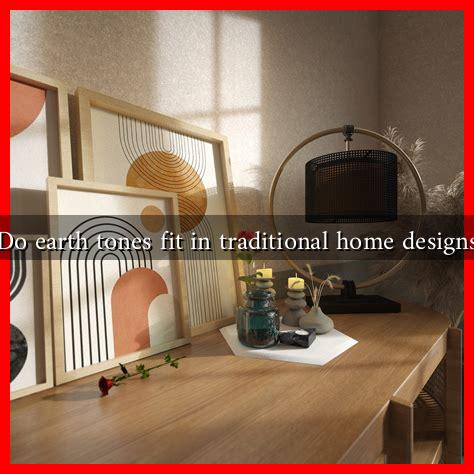-
Table of Contents
Do Earth Tones Fit in Traditional Home Designs?
In the world of interior design, color plays a pivotal role in shaping the ambiance and character of a space. Among the myriad of color palettes available, earth tones have emerged as a popular choice, particularly in traditional home designs. This article explores the compatibility of earth tones with traditional aesthetics, examining their historical significance, psychological effects, and practical applications.
The Historical Significance of Earth Tones
Earth tones, which include shades of brown, beige, green, and muted yellows, have been used in architecture and design for centuries. Historically, these colors were derived from natural materials such as clay, stone, and wood, making them a staple in traditional home designs. The use of earth tones can be traced back to various cultures:
- Colonial America: Early American homes often featured muted colors that reflected the natural landscape, creating a harmonious connection between the home and its surroundings.
- European Traditions: In countries like Italy and France, earth tones were prevalent in rustic villas and farmhouses, emphasizing a sense of warmth and comfort.
- Asian Influences: Traditional Japanese homes often incorporate natural materials and colors, promoting tranquility and simplicity.
These historical precedents illustrate that earth tones have long been associated with traditional design, making them a fitting choice for contemporary interpretations of classic styles.
The Psychological Effects of Earth Tones
Color psychology plays a significant role in how we perceive and interact with our environments. Earth tones are known for their calming and grounding effects, which can enhance the overall atmosphere of a traditional home. Some psychological benefits include:
- Warmth and Comfort: Earth tones evoke feelings of coziness, making spaces feel inviting and lived-in.
- Connection to Nature: These colors remind us of the natural world, promoting a sense of peace and well-being.
- Timelessness: Earth tones are versatile and can adapt to changing design trends, ensuring that traditional homes remain relevant over time.
By incorporating earth tones into traditional designs, homeowners can create spaces that not only look beautiful but also foster emotional well-being.
Practical Applications of Earth Tones in Traditional Home Designs
Integrating earth tones into traditional home designs can be achieved through various elements, including paint, furnishings, and decor. Here are some practical applications:
- Wall Colors: Soft beige or muted green walls can serve as a neutral backdrop, allowing other design elements to shine.
- Furniture: Wooden furniture in natural finishes complements earth-toned palettes, enhancing the traditional aesthetic.
- Textiles: Incorporating earth-toned fabrics in upholstery, curtains, and rugs can add warmth and texture to a space.
- Accent Pieces: Decorative items such as pottery, artwork, and cushions in earth tones can provide visual interest without overwhelming the design.
For example, a traditional living room might feature a beige sofa paired with olive green throw pillows and a rustic wooden coffee table, creating a cohesive and inviting atmosphere.
Case Studies: Successful Implementations of Earth Tones
Several designers and homeowners have successfully integrated earth tones into traditional home designs, showcasing their versatility and appeal. One notable example is the home of designer Sarah Richardson, which features a palette of warm browns and soft greens that enhance the traditional architecture while providing a modern twist. Another example is the living room featured in House Beautiful, where earth tones create a serene and inviting space that honors traditional design principles.
Conclusion
In conclusion, earth tones are not only compatible with traditional home designs but also enhance their warmth, comfort, and timelessness. By drawing on historical significance, psychological benefits, and practical applications, homeowners can create spaces that reflect their personal style while honoring traditional aesthetics. As the trend towards natural and sustainable living continues to grow, earth tones will likely remain a staple in traditional home design, bridging the gap between the past and the present.


